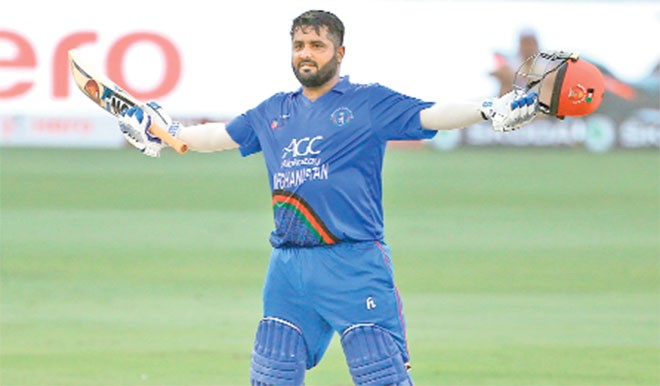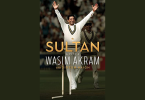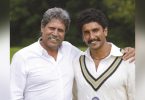Due to Inzamam’s inability to cross the crease on time, his common mode of dismissal became run out and bowlers tried to take his wicket that way as otherwise it would have been impossible
With the ‘heavyweight’ Afghani Mohammad Shahzad blasting a century against India and helping his side ‘tie’ the match with the two-time former World Champions, one thing is certain – you don’t have to be ‘Super-fit’ to be a hit in Cricket.
Shahzad is not the first man to represent his country despite being on the heavy side but his performance makes you go back in time and wonder about some of the ‘heavy-duty’ cricketers who not only played international cricket but made a name for themselves despite the ‘weight’.
W G Grace – England (1880 – 1899)
The father of Test Cricket was one of the heaviest players of his time despite being a doctor himself; he may have been on the heavy side but he continued to play Test cricket till he was 45, scoring 2 centuries and crossing 1000 runs in 22 Tests.
Mike Gatting – England (1977 – 1995)
The former England captain didn’t look like a cricketer, especially when he was leading the side during the 1980s; he was overweight but instead of falling behind, he used that to his advantage and scored as many as 10 Test centuries until his career was brought to a halt by the ‘Ball of the Century’.
Arjuna Ranatunga – Sri Lanka (1982 – 2000)
For 18 years, Arjuna Ranatunga was busy as the Sri Lankan player who troubled all his opponents; when young he wasn’t obese but during the 1990s he was easily the fattest cricketer on the planet. However, that didn’t stop his ascent and he helped Sri Lanka become World Champions in 1996!
David Boon – Australia (1984 – 1996)
This burly Australian may now be a Match Referee but back in the day he was a terror when on the crease; with over 7000 Test Runs and nearly 6000 ODI runs to his name, he scored runs when it mattered the most and not only won a World Cup for his side but also four back-to-back Ashes.
Merv Hughes – Australia (1985 – 1994)
Tall, mustached and menacing is the best way to describe this Aussie legend who played international cricket for less than a decade but made a name for himself in every way possible. Be it his utility as a spearhead or a stock bowler, Merv was always there to serve his captain and his 250 international wickets is a proof of his brilliance.
Akram Khan – Bangladesh (1988 – 2003)
Former Bangladeshi captain Akram Khan was instrumental in his side’s ascent to a Test nation but it was his weight that made him popular the world over. He didn’t look like an athlete but was known for his shrewd planning as skipper and fierce hitting that saw the ball reach the boundary very often. Out of his 259 runs in eight Tests, 134 came off just fours and sixes!
Inzamam-ul-Haq – Pakistan (1991 – 2007)
Currently serving as the Chief Selector of Pakistan, Inzamam-ul-Haq was one of the best batsmen in the world during his playing days. He amassed over 20000 runs in international cricket for Pakistan, scoring at least a century against each Test-playing nation and saved Pakistan from certain defeat on countless occasions. However, it was his weight that always attracted the attention. Due to his inability to cross the crease on time, his common mode of dismissal became run out and bowlers tried to take his wicket that way as otherwise, it would have been impossible.
Shane Warne – Australia (1992 – 2007)
The most successful leg-spinner of all time was also the unluckiest as he was overweight all his career and even missed the World Cup in 2003 after testing positive for diuretics – a drug used to help weight loss. Even with that to his name, he ended with eight more wickets than Richie Benaud, Abdul Qadir and Clarrie Grimmett combined and is ranked as one of the best bowlers of the last 30 years along with Muttiah Muralitharan of Sri Lanka.
Jesse Ryder – New Zealand (2008 – 2014)
The troublesome Kiwi batsman was popular due to his weight as well as his off-field activities that saw his career go down the drain. He could bat, he could ball and was excellent in the field but never looked comfortable due to his lackluster posture. He scored six centuries for his country, including a double Test Ton against India, but his career was plagued by alcohol abuse as well as off-the-field antics that got him kicked out from Cricket, for good.
Dwayne Leverock – Bermuda (2006 – 2009)
At 280 pounds, Leverock is undoubtedly the heaviest of all modern-day cricketers but his usefulness as a bowler who can take wickets and contain runs made him a star in the Bermudian side. To make his side’s first and only World Cup memorable in 2007, he contributed with a one-handed catch that shocked the followers of the game.
Mohammad Shahzad – Afghanistan (2009 – onwards)
The explosive batsman from Afghanistan blasted a century against India during the Asia Cup but that wasn’t a fluke; he had crossed 100 four times before: against Zimbabwe, Holland, and Scotland. He is a modern-day cricket marvel as he keeps wickets as well as opens the innings for his side and still has a lot of Cricket left in him.
Samit Patel – England (12th Man) (2008 – 2015)
Usually, slow left arm Spinners are lanky bowlers who can bowl at one spot all day like Bishen Singh Bedi, Iqbal Qasim, Ravi Shastri, and Ravindra Jadeja. However, Samit Patel was different and that had everything to do with his weight. A brilliant bowler, he was axed from the team for not meeting the fitness requirement but in the seven years with the English side, he both batted and bowled with his heart out and ended with a batting strike rate of 94 in ODIs and 24 wickets in 36 appearances in the same format.







